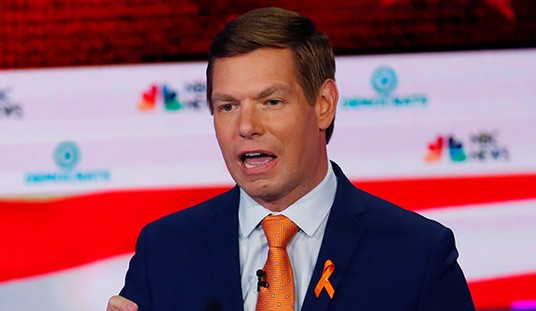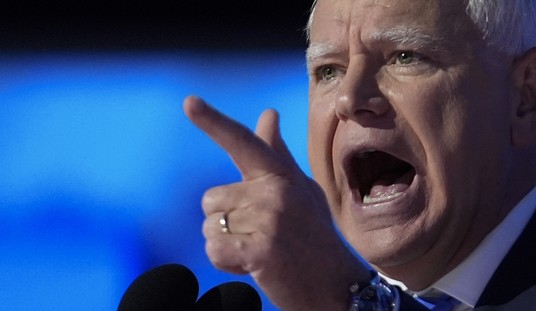There’s been quite a buzz over Ryan Lizza’s New Yorker article in which MIT economist Jonathan Gruber claims that, although a modest number of Americans may see their health insurance policies change under Obamacare, only 3% of the population will be hurt financially by that change.
Of course, 3% is more than “none.” It’s also very different from another of Obama’s statements, that a typical family will save $2,500, which Obama “promised” repeatedly (with his fingers crossed, as it turns out).
Still, it’s nowhere near as bad as Obamacare’s critics — and many recent horror stories told by recipients of policy cancellations — would suggest. But is Gruber’s prediction correct?
Not being a number-crunching economist, I can’t tell you. What I can say is that these predictions of Gruber’s have been critiqued and described in a Business Insider article by Josh Barro as “garbage,” and that Barro is otherwise known as “Obama’s favorite conservative columnist,” whatever that might mean.
In most of the articles I’ve seen so far about these projections, Gruber is touted as having been the main architect of Romneycare. This is true. But it also makes it sound as though he might be a Republican, which is most definitely not the case. Gruber is an extremely partisan Democrat and not the least bit shy about it, as can be seen from this month-old Esquire interview with him.
That doesn’t mean, of course, that Gruber’s not correct about what he’s predicting. It just means, let’s say, that his loyalties lie on the side of Obamacare.
There’s another personal reason that Gruber might be eager to see Obamacare succeed: he not only was Romneycare’s architect, he was Obamacare’s architect as well. What’s more, he was instrumental in making sanguine predictions about how much money Obamacare would end up saving people, projections Congress relied on heavily in soothing its own anxieties and passing the bill. And so he is invested in validating his own past predictions as well.
Ryan Lizza doesn’t mention this history of Gruber’s influence on the congressional deliberations about Obamacare; perhaps he thinks it’s irrelevant, perhaps he’s unaware of it, or perhaps he just doesn’t want to talk about it. But this is what occurred back then (as described by Avik Roy, who often acts as Gruber’s foil in discussions and debates on these issues):
Before the Patient Protection and Affordable Care Act became law, Gruber published a widely-cited analysis, using his Gruber Microsimulation Model, in which he asserted that in 2016, young people would save 13 percent, and older people 31 percent, on their insurance premiums. Gruber’s numbers were used to rebut an October 2009 analysis from PriceWaterhouseCoopers, which projected that non-group (a.k.a. individual-market) premiums would increase by 47 percent over the same period….
After Obamacare was signed into law, Cohn described the Gruber-led counterattack against PwC as a turning point in the fight to get the bill passed…
Gruber’s numbers convinced “wavering Democrats” on the Finance Committee to “get on board.”
So, was Gruber correct about those savings? Well, not exactly. But don’t take my word for it; it’s Gruber himself who says so:
From August 2011 to January 2012, [Gruber] issued three reports to state governments stating that non-group insurance premiums would increase, relative to prior law. By 2016, he wrote, premiums would increase in Colorado by 19 percent; Minnesota by 29 percent; and Wisconsin by 30 percent.
Most importantly, Gruber has admitted that his model has a catastrophic flaw: it can’t model the impact of Obamacare’s requirement that insurers take all comers regardless of pre-existing conditions. Here’s what he said to the State of Colorado:
“It is important to recognize some limitations in our modeling of prices. In particular, given publicly available data we cannot incorporate the effects of the ban on pre-existing conditions exclusions. This ban will cause a rise in premiums as insurers are forced to cover conditions that they had previously excluded. In addition, there are new premium taxes on insurers that will raise premium rates…Overall, we cannot predict the net impacts of these factors on premiums without more analysis.”
It’s precisely this aspect of the law that non-partisan analysts have pointed to as a reason why Obamacare will drive up premiums.
As I said, I can’t crunch the numbers myself. But between his vested interest in downplaying Obamacare’s negative effects as one of its promoters and main designers, his previous track record in prediction, and his methodology, it makes sense to be somewhat skeptical of what he’s predicting now.
Then there’s the Obama administration’s own projections that state, “66 percent of small employer plans and 45 percent of large employer plans will relinquish their grandfather status by the end of 2013.” It appears that Gruber would have you think that virtually all of these plans will be replaced by equivalent ones that are less expensive, or at least of equal value, compared to the ones that preceded them and were canceled.
Somehow that’s hard to believe. But we should find out soon enough, as reality begins to replace models.









Join the conversation as a VIP Member